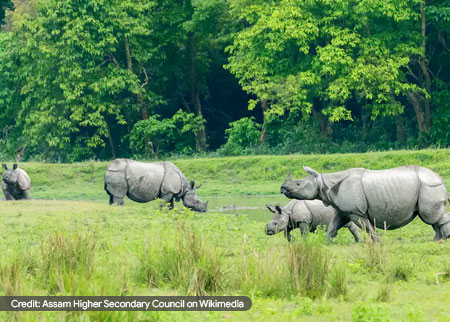Commonly known as the ‘Seven Sisters’, Northeast India is a beautiful region of the country that comprises of seven states. They are Arunachal Pradesh, Assam, Manipur, Meghalaya, Mizoram, Nagaland and Tripura. Each state holding its distinct cultures, values and traditions. The region’s landscape spread over 2000 km connected with the rest of India by a 20 km wide narrow stretch of land. The grandeur of its luxuriant landscape, ecological assortment range of communities makes North East quite different from other parts of the country.
Being situated amidst the hilltops, it is truly fascinating to tour around the scenic valleys, picturesque hills, and lush green prairies with numerous species of flora and fauna, the cloudy sky above. In addition to these, a number of wildlife sanctuaries, national parks, ancient temples, lakes, scope for activities like jungle safaris, boating, hiking is there to enjoy on your trip.
SIGHTSEEING PLACES IN NORTHEAST
Majuli Island
Majuli Island is located on the Brahmaputra River in Assam is the biggest river island in the world. Formed by the River Subansiri in the north and the Brahmaputra in the south this island is known as the cultural capital of Assam. The place is covered by greenery on every side and is a pollution-free environment-friendly destination. This place attracts lots of tourists due to its unique landscape and its vibrant festivals. The notable festivals are Raas Purnima, Paal Naam, and Bathow Puja which are celebrated grandly with dance performances and many other things.
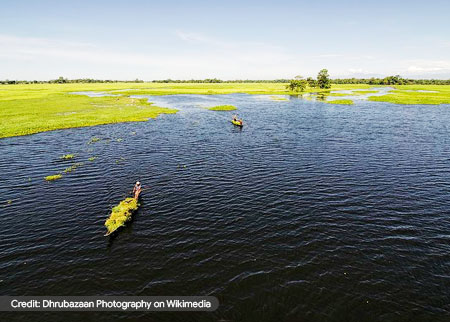

Mawlynnong Village
Mawlynnong Village is famous for being one of the cleanest villages in Asia and people believe this place is God’s Own Garden. It has fruit orchards, emerald green surroundings, scenic beauty, and a peaceful ambiance. It is also home to the famous living root bridge of Northwest. Travelers can also visit the historic Church of the Epiphany which is a beautiful piece of European architecture located in the middle of the lush tropical paradise. It has pleasant weather, tasty food, and breathtaking views and is a great place to relax and rejuvenate in nature
The Living Root Bridges
The Living Root Bridges of Meghalaya is one of the most beautiful and mesmerizing attractions the Northeast has to offer. Made up of intertwined roots these bridges have been built for centuries by ingenious people of the land. It is a dreamlike architecture of a naturally built ecosystem of local flora symbolizing the knowledge of the local people and the significance of nature in their culture. There are approximately 100 living root bridges across different villages with the most popular ones in Nongriat, Cherrapunji, Nongbareh, and other nearby locations. These bridges have remarkable structures and are a feat of man-made marvels in architecture
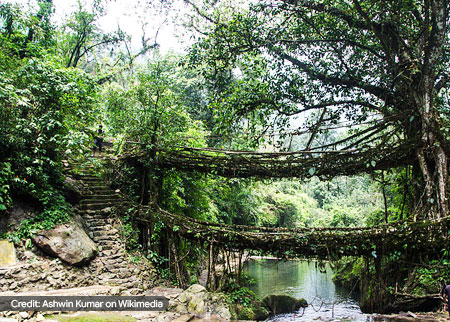
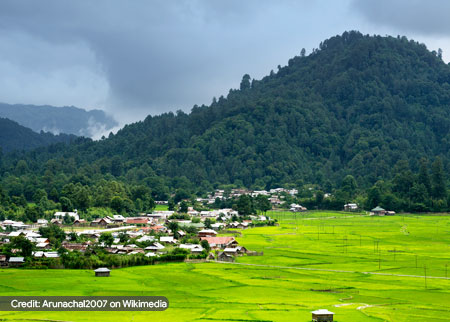
Ziro Valley
Located at an elevation of 5500 feet Ziro is tucked away in the forbidding mountain-scape of Arunachal Pradesh. It has a hypnotic natural charm full of sprawling rice fields, green hills, and small villages under thick layers of vibrant flora. Ziro is filled with scenic beauty and tranquil nature which makes it a paradise for soul seekers. It offers exotic hills, lush bamboo forests, picturesque trails, and terraced rice fields. It also has the “ Talley Wildlife Sanctuary” which is a very popular tourist attraction as well as home to the clouded leopards. It is also famous for its “Ziro Music Festival” which numerous music lovers, top national and international music bands, and folk artists celebrate this festival in September.
Kamakhya Temple
It is said that Kamakhya Temple is the place where Sati retires in secret to satisfy her amour with Lord Shiva. The temple is popular among pilgrims of Tantric worship, more so during the annual Ambubachi Mela Festival. In 1498, it is believed that Hussein Shah destroyed the temple complex. It was then again rebuilt by Naranarayan during the year 1565. The Ahoms also had some part in the reconstruction of the temple.
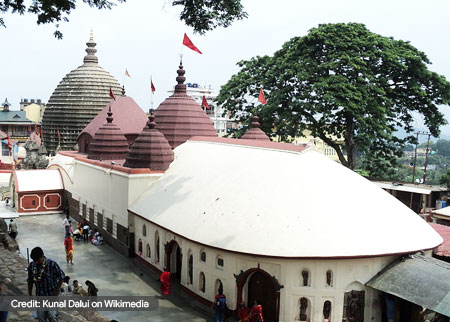
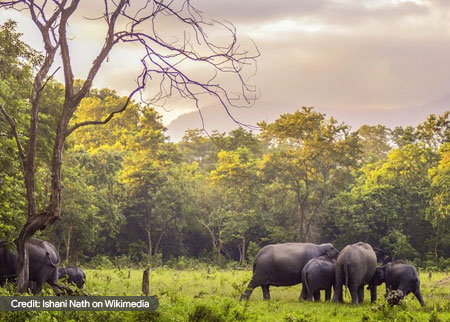
Manas National Park
It is the epitome of adventure in the Assamese region. This National Park also continues over the border and merges with the Royal Manas National Park of Bhutan. The park is famous for its high population of the wild water buffalo species. The park was declared as a sanctuary during the year 1928, although it was a hunting ground for many years before that. Other animals that you can find in the park are the following: pygmy hog, Indian rhinoceros, sambar and Malayan giant squirrel.
Kaziranga National Park
The Area was declared in 1905 as the Kaziranga Proposed Reserve Forest, whose main goal was to preserve the one-horned rhinos in the region. The park is home to the largest population of the world’s one-horned rhino species and 9 of the 14 primate species in the country lives in the park.. The park also has the largest numbers of the wild Asiatic water buffalo and Eastern swamp deer. The national park also has the highest density of tigers at about one tiger per five kms squared. It is definitely a must visit.
